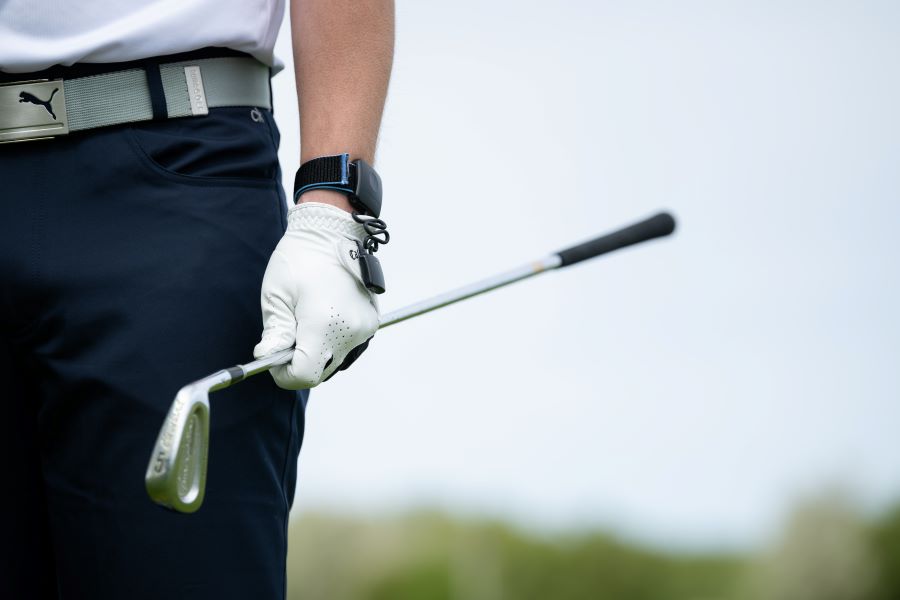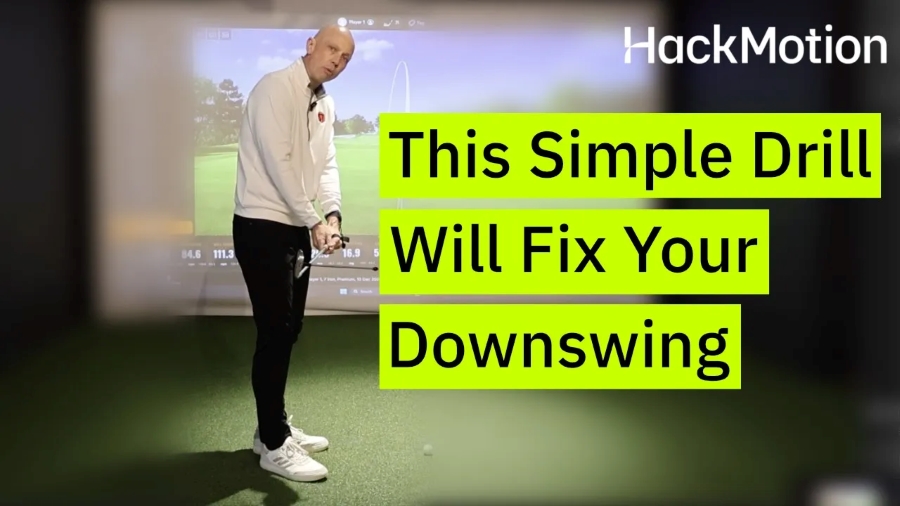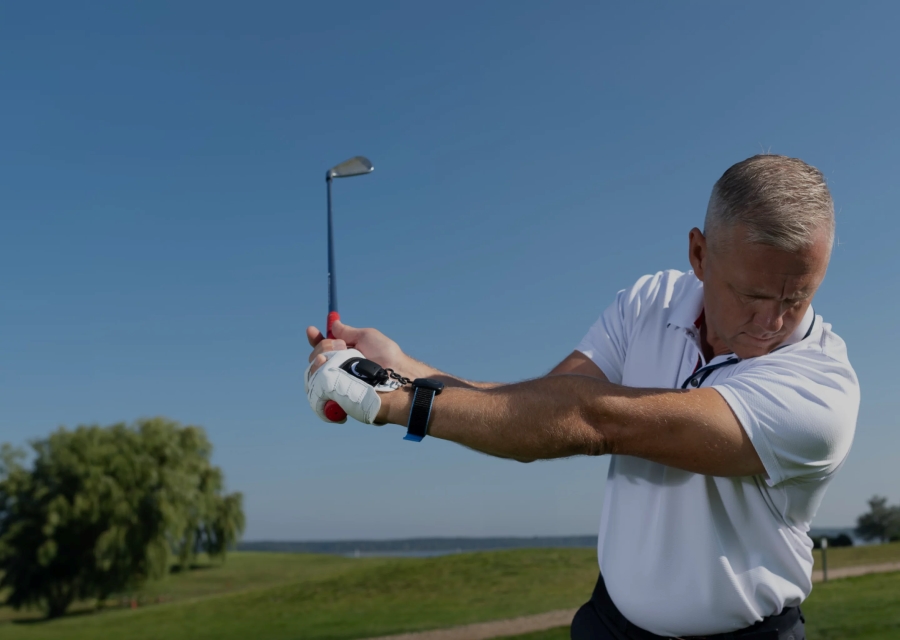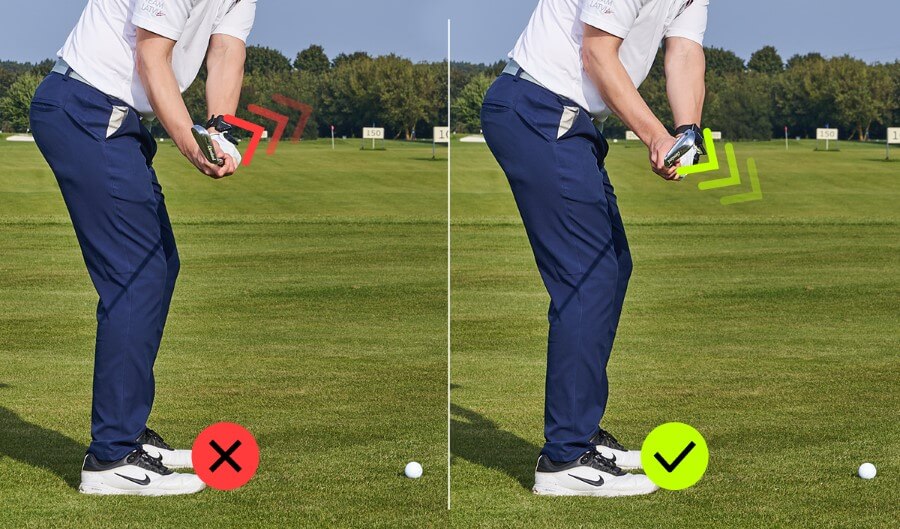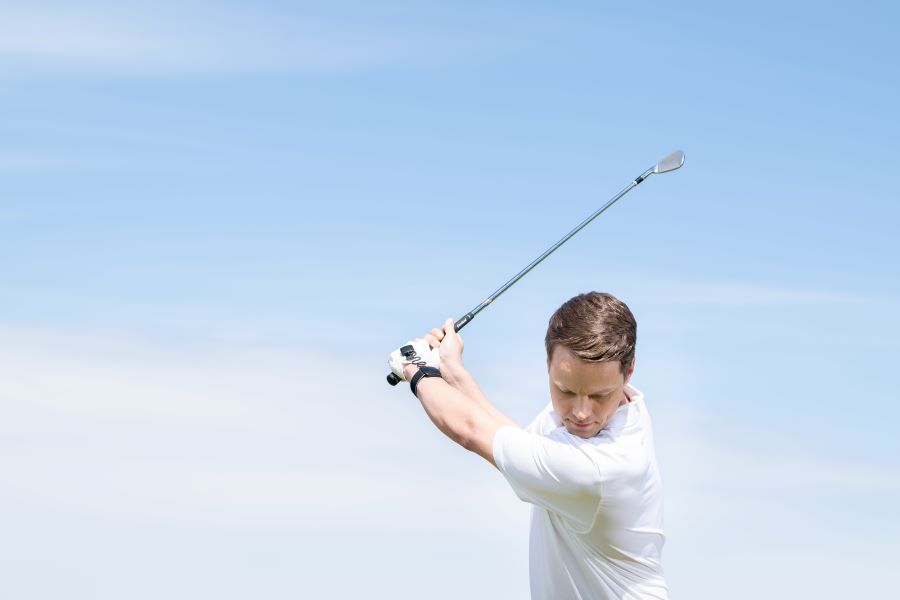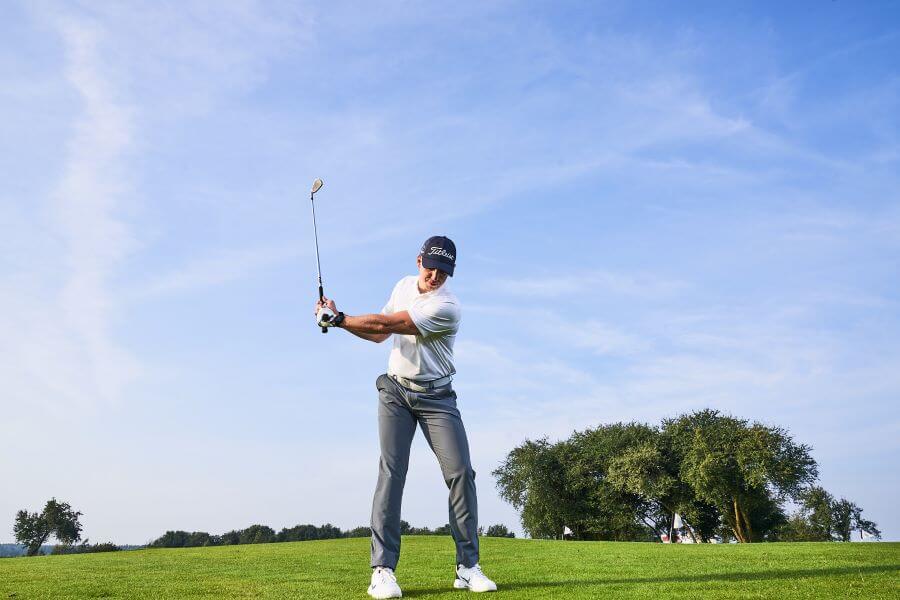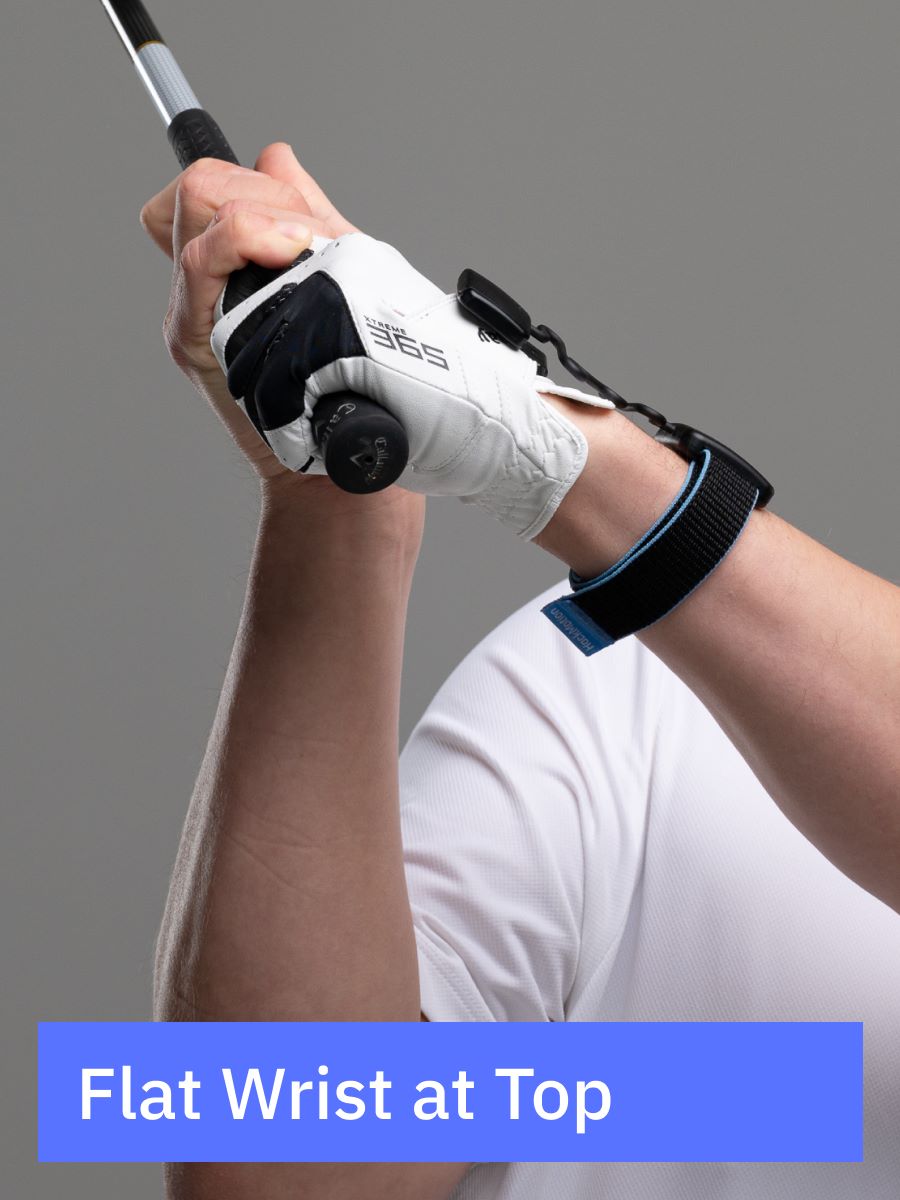Proper Wrist Hinge in the Golf Swing Explained & Drills to Improve
How much should the wrists hinge in golf? Do they hinge with your irons but not your driver? What do you do if the wrist hinge doesn’t feel right?
These are all common questions golfers have for a good reason. Wrist hinge in golf is crucial for achieving power and consistency in your shots.
If you’re struggling with wrist hinge and believe it could be the key to unlocking more power and repeatability in your results (which it often is), we have all the information you need.
Discover when and how to hinge your wrists in golf, and learn the importance of proper wrist positioning to ensure a square clubface.
Wrist Hinge in the Golf Swing (Key Takeaways)
If you don’t have time right now to dive into the details of the wrist hinge in golf, at least take these important points with you.
Here are the key things to remember about the proper wrist hinge in golf:
- Wrist hinging does not occur at the same time for all players. However, positions at the top of the swing and at impact are the most important.
- To check proper wrist hinge in golf, you must look for flexion and extension angles as well as ulnar and radial deviation; the best way to do this is using HackMotion.
- Many professionals look like they have much more wrist hinge than they actually do. Wrist motion and wrist hinge in golf are and should be subtle.
- Sequence and timing are just as important as the amount of wrist hinge. During the takeaway, all golfers have to combine a certain amount of turn and wrist movement to get the club in the correct position at the top.
- Wrist angles control the clubface. Until your wrist hinge is consistent and correctly timed, it’s very difficult to hit golf shots with a square face.
Contents
What is the Proper Wrist Hinge in Golf?
The proper wrist hinge in golf will vary depending on the player, type of golf swing, and even the shot you are trying to play.
However, when it comes to wrist angles and hinge at impact, there are certain patterns that we continually see professionals repeat. After analyzing more than 1,000,000 swings, it becomes easier to see what works and what does not.
These angles in the golf swing have been studied and analyzed by professional golfers. The goal of a proper wrist hinge is to ensure that no matter how you take the club back, you can get your club into a square position at impact.
Why is Wrist Hinge Important in Golf Swing?
The wrists control the clubface.
Yes, it is as simple as that. If you want to have a square clubface at impact, you must be able to manage the wrist hinge in your golf game.
Wrist hinge leads to the positioning of the club at the top, which then impacts the transition to the downswing, eventually controlling where your clubface is at impact. Pretty important!
If you are not aware of your wrist hinge and the impact it has on the golf swing, try this drill.
Take one swing where you feel like you don’t hinge your wrists until the top of the swing. Then, take a swing where you set your wrists almost immediately after taking the clubface away from the ball.
The difference in these two swings will likely feel huge, and one or the other may make it easier for you to get a square clubface at impact.
How Wrist Hinge Affects Your Backswing?
The amount of hinge in your wrists during the backswing will have a significant impact on the positioning of the club.
Here are the key factors in golf impacted by wrist hinge:
- Leverage: Proper wrist hinge increases leverage and power.
- Swing Plane: Wrist hinge in the backswing affects swing plane, trajectory, and direction.
- Clubface Position: Wrist controls clubface; proper hinge leads to a square clubface at impact.
- Swing Arc: Good wrist hinge extends the backswing, boosting speed and distance.
- Timing: A consistent wrist hinge improves rhythm, flow, and consistency in your swing.
How Much Wrist Hinge Do You Want?
At this point, I’ve probably got you curious about whether you hinge your wrists early or late or even if you hinge them enough.
In this video from Zach Allen, you can learn a great deal about the timing of wrist hinge and what that does to your golf swing. You may be surprised to see how ulnar and radial deviation play into this process.
Hinging Early
Hinging your wrists early in the golf swing means that by the time your club gets to parallel, you have already started to hinge your wrists.
For golfers who like more of a compact swing with a lot of pivoting and body rotation, an early hinge is a great option. An early wrist hinge is not the answer for everyone.
With the early hinge, when you get to the top of the swing, you will often have a little less work to do to rotate the clubface to a square position for impact.
In fact, many players like this early hinge because then they can just turn their way through impact.
The problem with the early wrist hinge is the lack of extension and length it creates in the golf swing. It can impact the overall power of your shots. Stronger players with better speed often have an easier time with the early hinge method.
Hinging Late
Hinging late sounds like it’s a bad thing, almost like you forgot to hinge.
That is not true.
In fact, hinging late is something that many golf professionals do to create extension in their arms throughout the swing. If you look at Tiger Woods’ golf swing, he has very little wrist hinge and creates power with proper timing, consistency and descent angle.
With the late hinge, your wrists don’t hinge until you get to the top of your swing. Late wrist hinge kind of happens with the weight of the club in the hands, more than a deliberate movement in the takeaway.
One interesting thing that we know about professional golfers (especially those who hinge at the top) is that they work very hard to square that clubface up as soon as possible on the downswing.
The early squaring of the clubface allows for more rotational forces and speed through impact.
During the takeaway of a golf swing with a later hinge, you will notice more extension and a rounder-looking swing arc.
How to Hinge Wrists in Golf Swing?
Most golfers can figure out how to hinge the wrists; the question is how to get the right amount of wrist hinge at the right time.
Once you find that perfect amount (for your swing!), then you can work on other things like weight shift, speed, turning, and, most importantly, clubface control.
Although your wrists can hinge at a time in the swing that works for your game, you must ensure that the club is on the proper plane after the wrists hinge. Some golfers struggle with the flex in their wrists, and this impacts both the clubface angle and the hinge of the wrists.
One of the best ways to practice this is to use HackMotion swing analyzer.

HackMotion is like wearing your coach on your wrists. Not only can you check on the amount of wrist hinge but also the timing of the hinge to make sure it’s accurate.
The HackMotion data is based on more than 1,000,000 golf swings and what truly works for players from a consistency standpoint.
As you wear the HackMotion sensor, you can see how far you are from the proper wrist position and then make adjustments to ensure the wrist is not too flexed or bowed or not hinged enough to create a square clubface.
HackMotion gives you feedback as you are swinging, allowing for real-time adjustments.
Work on both an early and a delayed wrist hinge to see which is more consistent for your golf game.
Best Ways (and Drills) to Practice Your Own Proper Wrist Hinge
Perhaps the most frustrating thing about wrist hinge is that there is no perfect way to do it. Working on this position through drills is a great way to experiment and see what works best for you.
Here are a few of our favorite drills to improve the wrist hinge.
The Early Set Drill
With the early set drill, you pick the club up so that it is directly in front of you, essentially hinge the wrists so that the club is parallel with the ground.
Once you have the club in this position, rotate back so that you have made an upper and lower body rotation.
Now you can see the club at the proper position with the wrists hinged, the club on plane, and your body rotated. From this position, you should be able to just turn and get yourself through the ball to hit a straight shot.
Extend the Takeaway
If you feel like your wrists are too active in the initial parts of the golf swing, a lower and slower takeaway can help calm things down.
Golfers who extend their takeaway and feel a bit wider at the start will end up having a wrist hinge closer to the top of their backswing.
The delayed wrist hinge can feel more powerful for those who have less strength and torque.
Blend Drill
Jason Porzak does a great job of setting up a wrist hinge drill that helps players combine how much wrist hinge and how much turn is needed in the takeaway.
It’s a common mistake for golfers to make too much turn or too much hinge and have that make it difficult to get the clubface to square at impact.
Use the HackMotion to Help
HackMotion pinpoints the exact issues in your golf game that occur due to your wrist action.
When wearing the HackMotion device on your lead wrist, you can learn exactly where the issues with wrist positioning and hinge happen in your swing. Essentially, you can take all the guesswork out of finding swing issues and rely on this technology instead.
What’s even better?
You can get actionable steps to fix your wrist hinge issues and a goal to work towards each time you head to the driving range. HackMotion is like having a golf teaching professional with you (for a lot less money!).
FAQs
I know that wrist hinge can feel a bit confusing at times, but the best part about it is that you can hinge at a time that works well for your swing.
What happens if my wrists hinge too much?
If your wrists hinge too much, you may get to a position with a plane that is too upright and have to slow down or even flip the club at impact to square the clubface.
What is the importance of wrist hinge in golf swing?
Hinging can help create power in the swing.
Depending on when you hinge, players can create extra lag in their swing or use their wrist hinge to simplify the swing and take more of a compact turn or rotation.
What happens if you don’t hinge your wrists in golf swing?
If your wrists never hinge in your golf swing, you will lose a lot of power.
In addition, the angle of descent into the golf ball will likely not be ideal and could cause issues with ball flight.
Do you hinge wrists with driver?
Wrists hinge with your driver, but it is best to avoid the hinge at the beginning of the golf swing.
Instead, wait until your golf club is extended and your takeaway has brought the club near the top of your backswing. This movement will increase the swing arc.
When should you unhinge wrists in golf swing?
Wrists should unhinge during the downswing. The exact timing of this unhinging will be impacted by the amount of rotation you have in your golf swing. The best players unhinge early and then rotate their bodies to gain speed.
Is it OK to set wrists early in golf swing?
It is completely acceptable to set wrists early in the golf swing, especially with irons and wedges. Be sure that when the club is set, it is on the proper plane.
Closing Thoughts
At this point, you are probably itching to get out to the range to experiment with wrist hinge.
I highly recommend bringing your coach, the HackMotion, to ensure you are within range of proper wrist positioning throughout your entire swing. This is the best way to reach your goals in the shortest amount of time.





